adrenal support
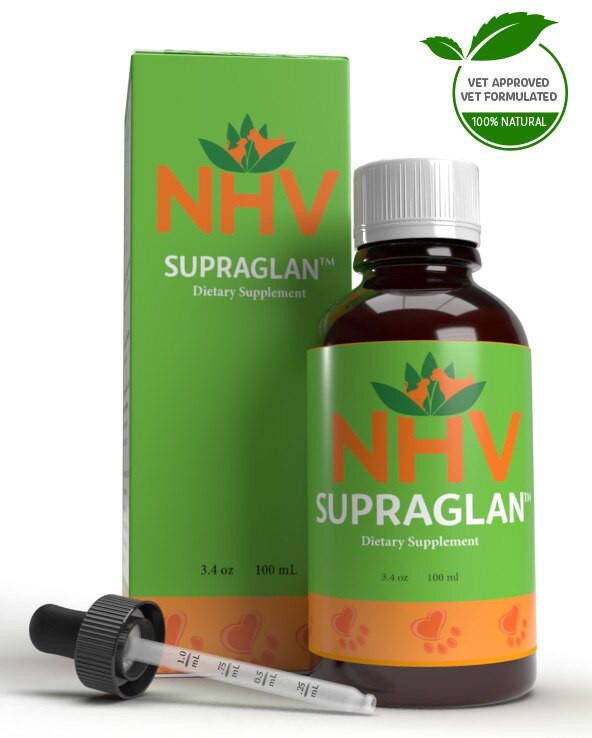
free shipping over $100 (USA & Canada)
1-877-937-4372 the pet expert hotline
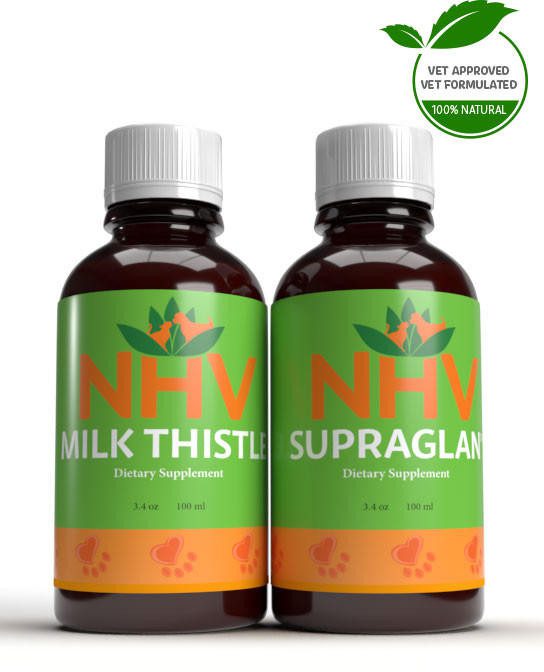
Supraglan & Milk Thistle to Support Dog & Pet Cushing's Disease

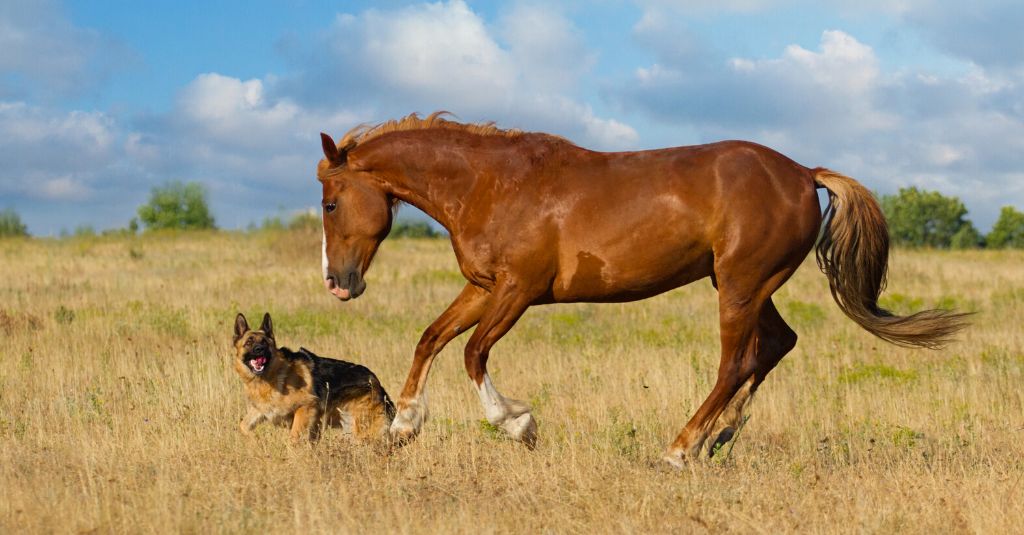
Cushing’s disease, also known as “hyperadrenocorticism” (HAC), is a very common problem in the canine world. It is not as common in other species like cats, goats, and pigs, but it is the most common adrenal issue in horses. The symptoms of Cushing’s disease in dogs, cats, horses and other species may vary.
In a general context, Cushing’s disease increases the amount of the hormone that is responsible for balancing the dog’s metabolism, cortisol. Cortisol is one of the most important hormones to keep the body in balance. Even though this hormone has an essential function, at high levels, it causes hypermetabolism. Hypermetabolism causes excessive breakdown, weakening the immune system. Thanks to this weakening, the animal is susceptible to several other diseases that hinder the life of the pet.
Cushing’s disease typically affects older domestic dogs. Poodles, Dachshunds, Terriers, and Boxers are all breeds prone to the condition. Older horses are also prone to the condition. It does not have a more incidence in certain sex in hoses, however, ponies are more prone to this condition.
The abnormal production of corticosteroids characterizes Cushing’s disease. According to veterinarians, a common cause is tumors in the pituitary and/or adrenal glands in dogs and horses.
Another cause could be iatrogenic, which is more than the non-indicated administration of medications, such as glucocorticoids. In horses, this condition is called pituitary pars intermedia dysfunction (PPID). Although it is not common in cats, the cause is often long-term administration of high doses of cortisol-like medications. It is usually not easy to control, but successful treatment is possible.
It is necessary to point out that, in the case of tumors, even if they cause imbalances in hormones, they are not predominantly malignant. The biggest problem is that when this occurs in the pituitary, they compress the pet’s nerve tissue, causing other anomalies.

The easiest way to identify Cushing’s disease in dogs is through regular check-ups. This is because, even if pets have several symptoms, they can be easily confused with signs of aging. Let’s compare the symptoms of Cushing’s disease in dogs, cats, and horses.
Symptoms of Cushing’s can be easily confused with signs of aging.
It is important to note that symptoms such as fever or cough are not so common. But, it is always necessary to keep an eye out, especially if your pet is a predisposed breed.
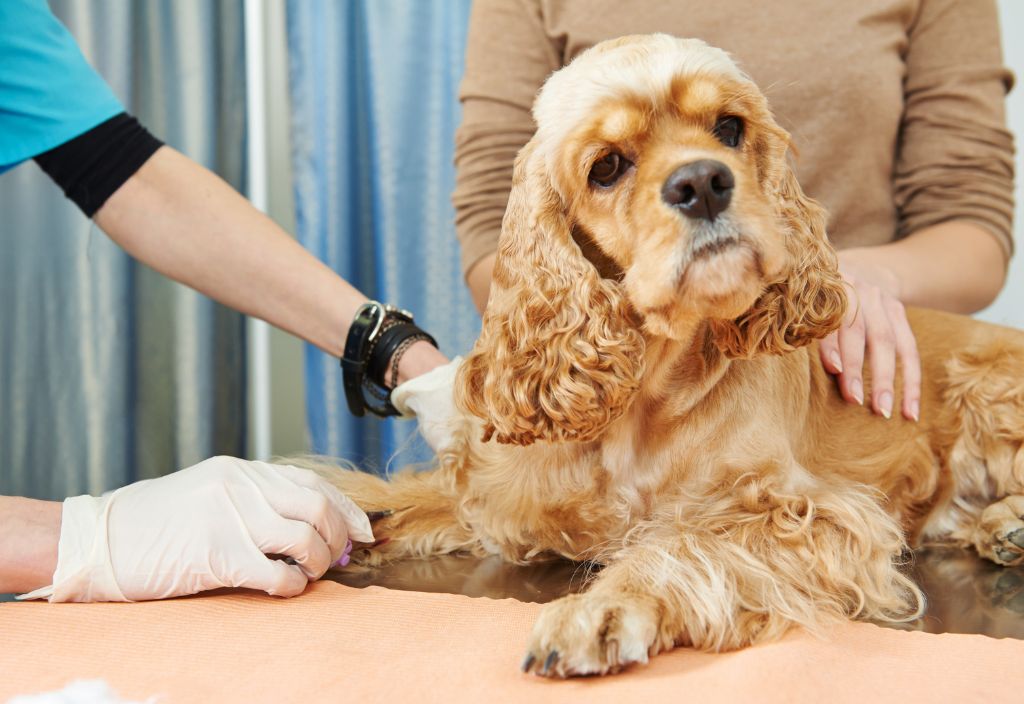
Ideally, the pet parent takes the pet to a veterinary hospital as soon as they notice symptoms. Veterinarians use several tests to diagnose an animal with Cushing’s disease. This includes stimulation (such as ACTH), dexamethasone suppression test and concentrated dosage of ACTG, and, of course, cortisol tests that are more specific to confirm the disease.
In addition to these, other tests may be performed to control the clinical status of the pet, such as the blood count, serum biochemistry, urinalysis, and radiography.
If the cause of a pet’s Cushing’s is an adrenal or pituitary mass, there is no exact way to prevent Cushing’s disease. The only form of prevention is the control of glucocorticoid medication.
Treatment for Cushing’s will depend on the cause. If a tumor is a detected cause, your vet may perform surgery along with chemotherapy. To treat the other disease and organs affected by the disease, the veterinarian will also recommend medication. These medications must be administered for the entire life of the animal.
An early diagnosis can prevent other organs from becoming compromised, maintaining your friend’s quality of life. That’s why it is important to keep your pet’s exams and check-ups up to date. This exam helps point out the need for other, more specific, exams.
We formulated our supplement, Supraglan, specifically to help balance the adrenal hormones. We suggest using Supraglan when your pet has a Cushing’s diagnosis from a veterinarian. However, Supraglan is not a replacement for medications prescribed by your vet. But, it is extra support to keep your furbaby healthy and happy.
As a result of the excess hormones, liver function can also be affected. We recommend using Milk Thistle alongside Supraglan to promote liver health and encourage the natural regeneration of liver cells. We have both of these supplements are in our Cushing’s Disease Essentials Kit. All of our supplements are also safe for long-term use and it is suitable for many species.
If you have any questions, NHV pet experts are here to guide you and help you with your pet’s conditions. Tap the button below to message us.
adrenal support

Natural Cushing’s Disease, Adrenal, and Addison’s Support for dogs
buy 2 and save $3
3 month supply for a small to medium size
What is it?
Our vet-formulated canine adrenal and Cushing’s support product can help your dog get the nutrients they need to balance vital hormones and promote healthy adrenal gland function.
How does it work?
Why trust it?
NHV Supraglan is safe to use alongside your veterinarian's recommendations.
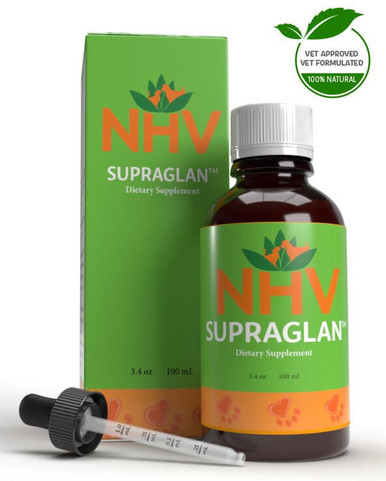
What is it?
Our vet-formulated canine adrenal and Cushing’s support product can help your dog get the nutrients they need to balance vital hormones and promote healthy adrenal gland function.
How does it work?
Why trust it?
NHV Supraglan is safe to use alongside your veterinarian's recommendations.
Dogs with adrenal disorders like Cushing’s and Addison’s may have other health issues that can affect a pup’s quality of life. Supraglan™ canine adrenal support supplements can help these dogs.
The overproduction of cortisol in canines with Cushing’s disease can cause excessive thirst, urination, and appetite. These symptoms can result in other side effects like obesity, fat pads near the neck, and low energy.
Cushing’s disease may sometimes be the result of continued steroid use or a tumor on the adrenal gland. Your vet’s treatment plan for Cushing’s or other canine adrenal support will likely include medication and potential surgery in cases where a tumor is present. Feeding Supraglan™ supplements to your dog alongside the vet’s treatment will help them through the process.
Our adrenal supplements can help dogs undergoing treatment for diseases like Cushing’s with powerful and natural ingredients that help improve adrenal gland function, regulate metabolism, and promote good digestion.
Supraglan™ is formulated with ingredients like borage which help to balance a dog’s endocrine system, astragalus for its anti-inflammatory effects, eleuthero to help regulate adrenal gland function, and other potent ingredients key in supporting their overall health.
For additional support, see NHV’s other adrenal disorder supplements and kits.
All of NHV’s canine adrenal support products are ethically sourced, free of GMOs, and tested by a third party to ensure concentration and product quality. Find natural solutions you can trust in your dog’s health regimen when you shop at NHV.
Borage – Helps to balance endocrine system functions, restore the adrenal cortex, and eliminate toxins
Astragalus – Contains anti-inflammatory properties and balance your dog’s immunity
Bistort – Contains anti-inflammatory properties that benefit the liver and kidneys
Eleuthero – Helps balance (Acts on, supports, aids, assists) adrenal gland function and may help balance metabolism
Wild Yam – Helps balance and normalizes liver function
Licorice – Contains anti-inflammatory properties and balance adrenal gland function
Dandelion – Helps balance liver secretions and promotes good digestion
Select your pet's weight to determine the correct dose.
To be taken twice daily. Determine your pet’s weight and then use the easy chart below to determine the correct dose. This is the minimum dosage.
Pet's Weight Dosage
0 - 15 lb = 0.5 ml
16 - 30 lb = 1.0 ml
31 - 45 lb = 1.5 ml
46 - 60 lb = 2.0 ml
61 - 75 lb = 2.5 ml
Over 75 lb = 3.0 ml
For small animals (rabbits, ferrets), avians and reptiles use 1 drop for every 2 lb of body weight.
How to Administer
Shake well before use. The easiest method is to use the dropper provided and place the drops into your pet’s food or favorite treat. You can also use the dropper and squirt directly into the pet’s mouth. Some pets can be finicky, if this occurs consider hiding the drops in foods most pet’s love such as fish, chicken or yogurt or a favorite treat. If your pet only eats dry food then soak a few kibbles at feeding time.
For Best Results
Herbal dietary supplements are beneficial to the health and well-being of your pet and are safe for long-term use. Every pet responds to natural herbal supplements differently, therefore it is important to be consistent and administer the product daily. Supplements generally take two to four weeks to take effect, however this will vary from one animal to the next.
Product Storage
All NHV Natural Pet Products are pure herbal extracts and contain no artificial additives, preservatives or coloring. Shelf life after opening is 6 months and must be refrigerated after opening.
Cautions and Contraindications
Do not use Supraglan in pregnant or nursing animals. Speak to your vet before using our products. A second visit is recommended if your pet’s condition does not improve, or deteriorates after continued use of the supplements.
All information provided by NHV Natural Pet Products is for educational purposes only.
Dogs with adrenal disorders like Cushing’s and Addison’s may have other health issues that can affect a pup’s quality of life. Supraglan™ canine adrenal support supplements can help these dogs.
The overproduction of cortisol in canines with Cushing’s disease can cause excessive thirst, urination, and appetite. These symptoms can result in other side effects like obesity, fat pads near the neck, and low energy.
Cushing’s disease may sometimes be the result of continued steroid use or a tumor on the adrenal gland. Your vet’s treatment plan for Cushing’s or other canine adrenal support will likely include medication and potential surgery in cases where a tumor is present. Feeding Supraglan™ supplements to your dog alongside the vet’s treatment will help them through the process.
Our adrenal supplements can help dogs undergoing treatment for diseases like Cushing’s with powerful and natural ingredients that help improve adrenal gland function, regulate metabolism, and promote good digestion.
Supraglan™ is formulated with ingredients like borage which help to balance a dog’s endocrine system, astragalus for its anti-inflammatory effects, eleuthero to help regulate adrenal gland function, and other potent ingredients key in supporting their overall health.
For additional support, see NHV’s other adrenal disorder supplements and kits.
All of NHV’s canine adrenal support products are ethically sourced, free of GMOs, and tested by a third party to ensure concentration and product quality. Find natural solutions you can trust in your dog’s health regimen when you shop at NHV.
Borage – Helps to balance endocrine system functions, restore the adrenal cortex, and eliminate toxins
Astragalus – Contains anti-inflammatory properties and balance your dog’s immunity
Bistort – Contains anti-inflammatory properties that benefit the liver and kidneys
Eleuthero – Helps balance (Acts on, supports, aids, assists) adrenal gland function and may help balance metabolism
Wild Yam – Helps balance and normalizes liver function
Licorice – Contains anti-inflammatory properties and balance adrenal gland function
Dandelion – Helps balance liver secretions and promotes good digestion
Select your pet's weight to determine the correct dose.
To be taken twice daily. Determine your pet’s weight and then use the easy chart below to determine the correct dose. This is the minimum dosage.
Pet's Weight Dosage
0 - 15 lb = 0.5 ml
16 - 30 lb = 1.0 ml
31 - 45 lb = 1.5 ml
46 - 60 lb = 2.0 ml
61 - 75 lb = 2.5 ml
Over 75 lb = 3.0 ml
For small animals (rabbits, ferrets), avians and reptiles use 1 drop for every 2 lb of body weight.
How to Administer
Shake well before use. The easiest method is to use the dropper provided and place the drops into your pet’s food or favorite treat. You can also use the dropper and squirt directly into the pet’s mouth. Some pets can be finicky, if this occurs consider hiding the drops in foods most pet’s love such as fish, chicken or yogurt or a favorite treat. If your pet only eats dry food then soak a few kibbles at feeding time.
For Best Results
Herbal dietary supplements are beneficial to the health and well-being of your pet and are safe for long-term use. Every pet responds to natural herbal supplements differently, therefore it is important to be consistent and administer the product daily. Supplements generally take two to four weeks to take effect, however this will vary from one animal to the next.
Product Storage
All NHV Natural Pet Products are pure herbal extracts and contain no artificial additives, preservatives or coloring. Shelf life after opening is 6 months and must be refrigerated after opening.
Cautions and Contraindications
Do not use Supraglan in pregnant or nursing animals. Speak to your vet before using our products. A second visit is recommended if your pet’s condition does not improve, or deteriorates after continued use of the supplements.
All information provided by NHV Natural Pet Products is for educational purposes only.
adrenal support
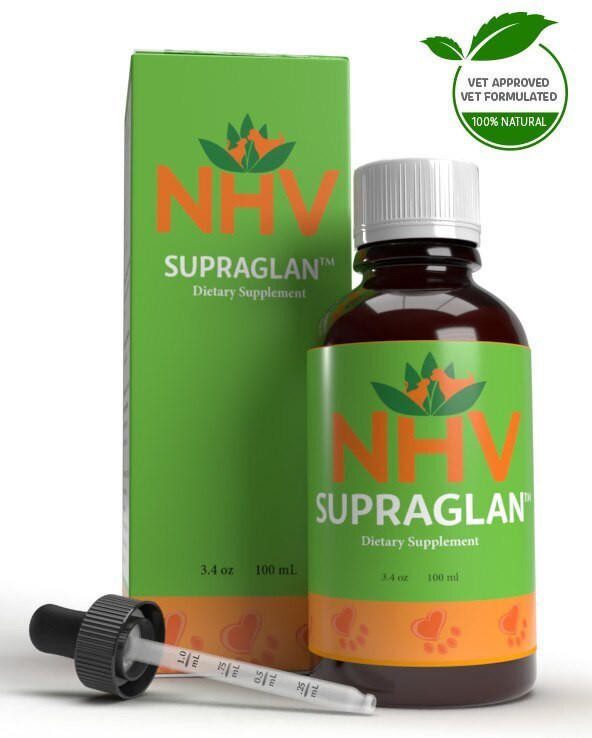
Support for adrenal dysfunction, Cushing’s and Addison’s disorders for cats
buy 2 and save $3
3 month supply for a small to medium size
What is it?
Supraglan is an all-natural and vet-formulated supplement designed to help your pet cope with symptoms of Adrenal Gland Dysfunction including increased thirst, frequent urination, hair loss, and skin problems.
How does it work?
Why trust it?
NHV Supraglan is made using human-grade ingredients in an FDA-approved facility, so your pet only gets the best.
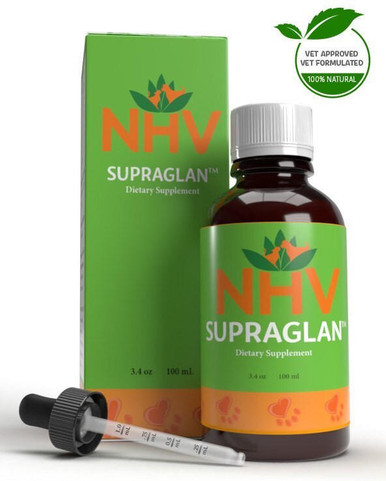
What is it?
Supraglan is an all-natural and vet-formulated supplement designed to help your pet cope with symptoms of Adrenal Gland Dysfunction including increased thirst, frequent urination, hair loss, and skin problems.
How does it work?
Why trust it?
NHV Supraglan is made using human-grade ingredients in an FDA-approved facility, so your pet only gets the best.
Order Supraglan today and help your cat enjoy a healthier life. Adrenal Gland Dysfunction occurs when the adrenal glands produce too many or too few hormones, affecting many basic body functions including blood pressure, heart rate, and glucose levels.
Borage – balance endocrine system functions, restores the adrenal cortex, and helps eliminate toxins.
Astragalus – Strengthens the immune system and acts as an anti-inflammatory.
Bistort – A soothing anti-inflammatory that has a tonic effect on the liver and kidneys.
Eleuthero – A root that supports the adrenal gland function and helps balance a sluggish metabolism.
Wild Yam – A herb that acts as a liver tonic and helps normalize hormone production.
Licorice – An adrenal support and anti-inflammatory.
Dandelion – A highly nutritious food that helps balance liver secretions and improves digestion.
Select your pet's weight to determine the correct dose.
To be taken twice daily. Determine your pet’s weight and then use the easy chart below to determine the correct dose. This is the minimum dosage.
Pet's Weight Dosage
0 - 15 lb = 0.5 ml
16 - 30 lb = 1.0 ml
31 - 45 lb = 1.5 ml
46 - 60 lb = 2.0 ml
61 - 75 lb = 2.5 ml
Over 75 lb = 3.0 ml
How to Administer
Shake well before use. The easiest method is to use the dropper provided and place the drops into your pet’s food or favorite treat. You can also use the dropper and squirt directly into the pet’s mouth. Some pets can be finicky, if this occurs consider hiding the drops in foods most pet’s love such as fish, chicken or yogurt or a favorite treat. If your pet only eats dry food then soak a few kibbles at feeding time.
For Best Results
Herbal dietary supplements are beneficial to the health and well-being of your pet and are safe for long-term use. Every pet responds to natural herbal supplements differently, therefore it is important to be consistent and administer the product daily. Supplements generally take two to four weeks to take effect, however this will vary from one animal to the next.
Product Storage
All NHV Natural Pet Products are pure herbal extracts and contain no artificial additives, preservatives or coloring. Shelf life after opening is 6 months and must be refrigerated after opening.
Cautions and Contraindications
Do not use Supraglan in pregnant or nursing animals. Speak to your vet before using our products. A second visit is recommended if your pet’s condition does not improve, or deteriorates after continued use of the supplements.
All information provided by NHV Natural Pet Products is for educational purposes only.
Order Supraglan today and help your cat enjoy a healthier life. Adrenal Gland Dysfunction occurs when the adrenal glands produce too many or too few hormones, affecting many basic body functions including blood pressure, heart rate, and glucose levels.
Borage – balance endocrine system functions, restores the adrenal cortex, and helps eliminate toxins.
Astragalus – Strengthens the immune system and acts as an anti-inflammatory.
Bistort – A soothing anti-inflammatory that has a tonic effect on the liver and kidneys.
Eleuthero – A root that supports the adrenal gland function and helps balance a sluggish metabolism.
Wild Yam – A herb that acts as a liver tonic and helps normalize hormone production.
Licorice – An adrenal support and anti-inflammatory.
Dandelion – A highly nutritious food that helps balance liver secretions and improves digestion.
Select your pet's weight to determine the correct dose.
To be taken twice daily. Determine your pet’s weight and then use the easy chart below to determine the correct dose. This is the minimum dosage.
Pet's Weight Dosage
0 - 15 lb = 0.5 ml
16 - 30 lb = 1.0 ml
31 - 45 lb = 1.5 ml
46 - 60 lb = 2.0 ml
61 - 75 lb = 2.5 ml
Over 75 lb = 3.0 ml
How to Administer
Shake well before use. The easiest method is to use the dropper provided and place the drops into your pet’s food or favorite treat. You can also use the dropper and squirt directly into the pet’s mouth. Some pets can be finicky, if this occurs consider hiding the drops in foods most pet’s love such as fish, chicken or yogurt or a favorite treat. If your pet only eats dry food then soak a few kibbles at feeding time.
For Best Results
Herbal dietary supplements are beneficial to the health and well-being of your pet and are safe for long-term use. Every pet responds to natural herbal supplements differently, therefore it is important to be consistent and administer the product daily. Supplements generally take two to four weeks to take effect, however this will vary from one animal to the next.
Product Storage
All NHV Natural Pet Products are pure herbal extracts and contain no artificial additives, preservatives or coloring. Shelf life after opening is 6 months and must be refrigerated after opening.
Cautions and Contraindications
Do not use Supraglan in pregnant or nursing animals. Speak to your vet before using our products. A second visit is recommended if your pet’s condition does not improve, or deteriorates after continued use of the supplements.
All information provided by NHV Natural Pet Products is for educational purposes only.
liver support
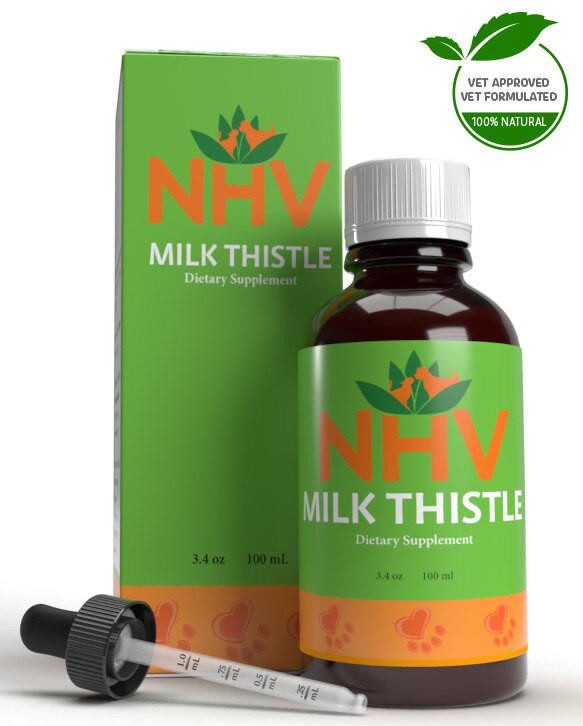
Support for liver and kidney detox and cancer support in dogs
3 month supply for a small to medium size pet
What Is It?
Milk Thistle for dogs is a gentle supplement that supports liver and kidney health, helps with detoxification, and provides antioxidant protection for long-term wellness.
How Does it Work?
Why Should I Trust It?
100% natural vet-formulated herbal remedy.


What Is It?
Milk Thistle for dogs is a gentle supplement that supports liver and kidney health, helps with detoxification, and provides antioxidant protection for long-term wellness.
How Does it Work?
Why Should I Trust It?
100% natural vet-formulated herbal remedy.

Milk Thistle is a powerful herb that’s been used by humans for thousands of years. The active ingredient, silymarin, has been shown through scientific studies to possess strong anti-inflammatory, antioxidant, and detoxifying properties. It also promotes cellular regeneration and repair.
This supplement by NHV Natural Pet Products uses 100% natural milk thistle to support dogs through liver and kidney conditions in addition to conventional treatment by their veterinarian.
Milk thistle improves kidney function due to the damage from:
The extraordinary antioxidant properties of milk thistle for dog extract acts to:
The scientific name for milk thistle is Silybum Marianum. It’s also referred to as wild artichoke and holy thistle.
Milk thistle for dog liver support can be used in conjunction with conventional treatments and is glycerin based and safe for long-term use. You can read more about the benefits of using milk thistle on Dr. Hillary Cook’s blog.
At NHV, all of our products including milk thistle for dog kidney support are plant-based and make excellent proactive support for many health conditions. If you have questions on milk thistle for dogs or any of our holistic supplements, you can ask an expert at NHV because we put your pet first when it comes to health and healing naturally.

Select your pet's weight to determine the correct dose.
To be taken twice daily. Determine your pet’s weight and then use the easy chart below to determine the correct dose. This is the minimum dosage.
Pet's Weight Dosage
0 - 15 lb = 0.5 ml
16 - 30 lb = 1.0 ml
31 - 45 lb = 1.5 ml
46 - 60 lb = 2.0 ml
61 - 75 lb = 2.5 ml
Over 75 lb = 3.0 ml
How to Administer
Shake well before use. The easiest method is to use the dropper provide and places the drops into your pet’s food or favorite treat. You can also use the dropper and squirt directly into the pet’s mouth.
Some pets can be finicky, if this occurs consider hiding the drops in foods most pet’s love such as fish, chicken or yogurt or a favourite treat. If your pet only eats dry food then soak a few kibbles at feeding time.
For Best Results
Herbal dietary supplements are beneficial to the health and wellbeing of your pet and are safe for long-term use. Every pet responds to natural herbal supplements differently, therefore it is important to be consistent and administer the product daily. Supplements generally take two to four weeks to take effect, however this will vary from one animal to the next.
Product Storage
All NHV Natural Pet Products are pure herbal extracts and contain no artificial additives, preservatives or coloring. Shelf life after opening is 6 months and must be refrigerated after opening.
Cautions and Contraindications
Do not use Milk Thistle in pregnant or nursing animals. Speak to your vet before using our products. A second visit is recommended if your pet’s condition does not improve, or deteriorates after continued use of the supplements.
All information provided by NHV Natural Pet Products is for educational purposes only.
Milk Thistle is a powerful herb that’s been used by humans for thousands of years. The active ingredient, silymarin, has been shown through scientific studies to possess strong anti-inflammatory, antioxidant, and detoxifying properties. It also promotes cellular regeneration and repair.
This supplement by NHV Natural Pet Products uses 100% natural milk thistle to support dogs through liver and kidney conditions in addition to conventional treatment by their veterinarian.
Milk thistle improves kidney function due to the damage from:
The extraordinary antioxidant properties of milk thistle for dog extract acts to:
The scientific name for milk thistle is Silybum Marianum. It’s also referred to as wild artichoke and holy thistle.
Milk thistle for dog liver support can be used in conjunction with conventional treatments and is glycerin based and safe for long-term use. You can read more about the benefits of using milk thistle on Dr. Hillary Cook’s blog.
At NHV, all of our products including milk thistle for dog kidney support are plant-based and make excellent proactive support for many health conditions. If you have questions on milk thistle for dogs or any of our holistic supplements, you can ask an expert at NHV because we put your pet first when it comes to health and healing naturally.

Select your pet's weight to determine the correct dose.
To be taken twice daily. Determine your pet’s weight and then use the easy chart below to determine the correct dose. This is the minimum dosage.
Pet's Weight Dosage
0 - 15 lb = 0.5 ml
16 - 30 lb = 1.0 ml
31 - 45 lb = 1.5 ml
46 - 60 lb = 2.0 ml
61 - 75 lb = 2.5 ml
Over 75 lb = 3.0 ml
How to Administer
Shake well before use. The easiest method is to use the dropper provide and places the drops into your pet’s food or favorite treat. You can also use the dropper and squirt directly into the pet’s mouth.
Some pets can be finicky, if this occurs consider hiding the drops in foods most pet’s love such as fish, chicken or yogurt or a favourite treat. If your pet only eats dry food then soak a few kibbles at feeding time.
For Best Results
Herbal dietary supplements are beneficial to the health and wellbeing of your pet and are safe for long-term use. Every pet responds to natural herbal supplements differently, therefore it is important to be consistent and administer the product daily. Supplements generally take two to four weeks to take effect, however this will vary from one animal to the next.
Product Storage
All NHV Natural Pet Products are pure herbal extracts and contain no artificial additives, preservatives or coloring. Shelf life after opening is 6 months and must be refrigerated after opening.
Cautions and Contraindications
Do not use Milk Thistle in pregnant or nursing animals. Speak to your vet before using our products. A second visit is recommended if your pet’s condition does not improve, or deteriorates after continued use of the supplements.
All information provided by NHV Natural Pet Products is for educational purposes only.
Published: June 10, 2022